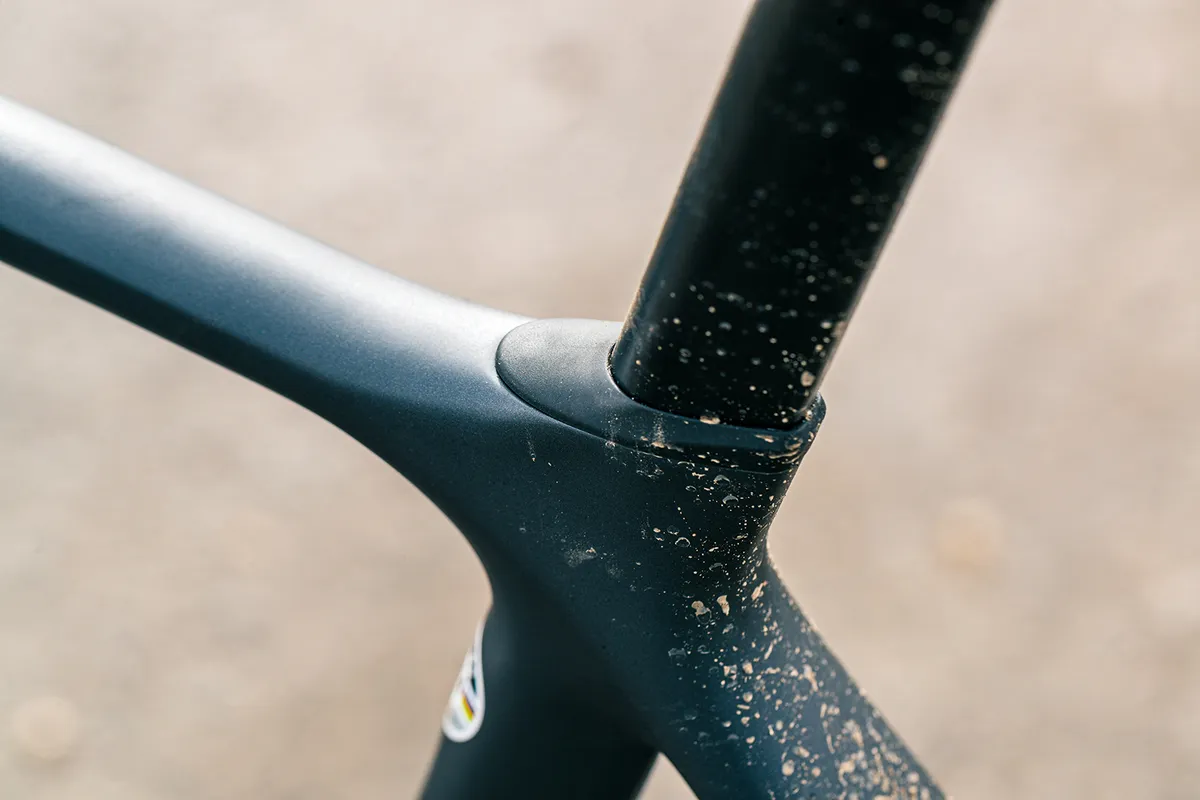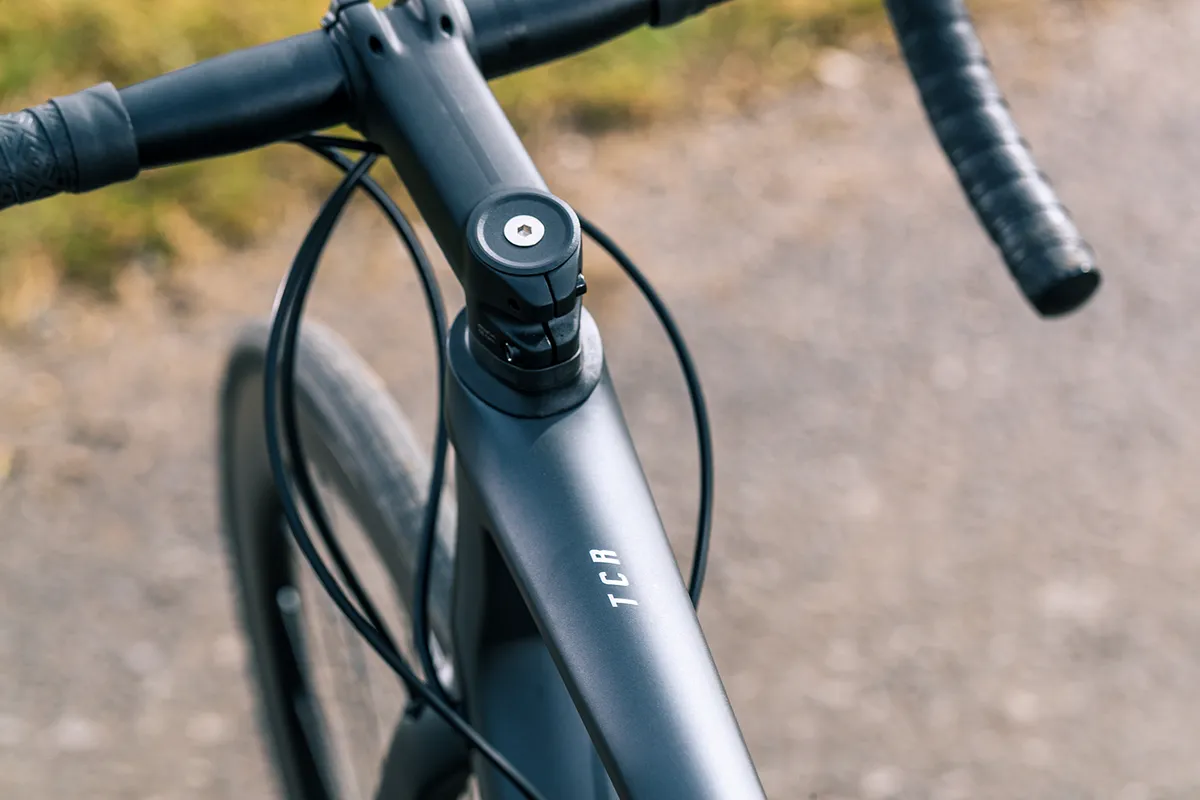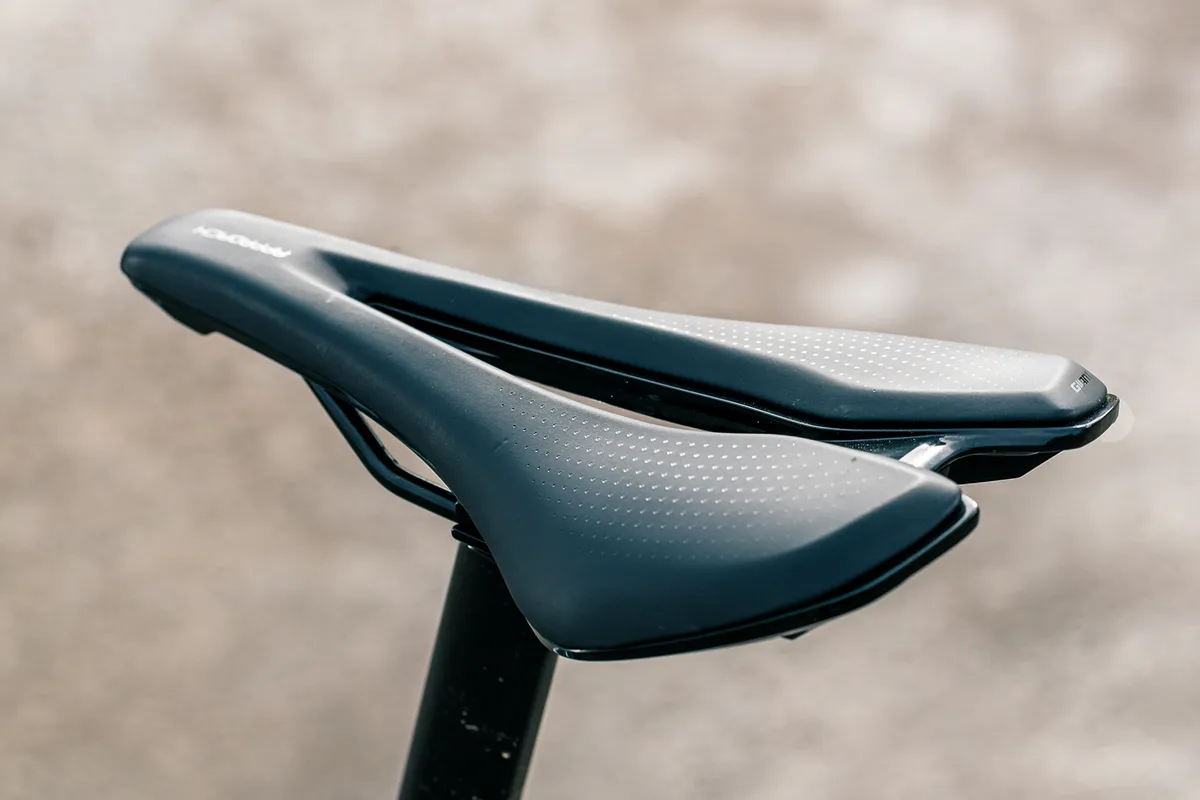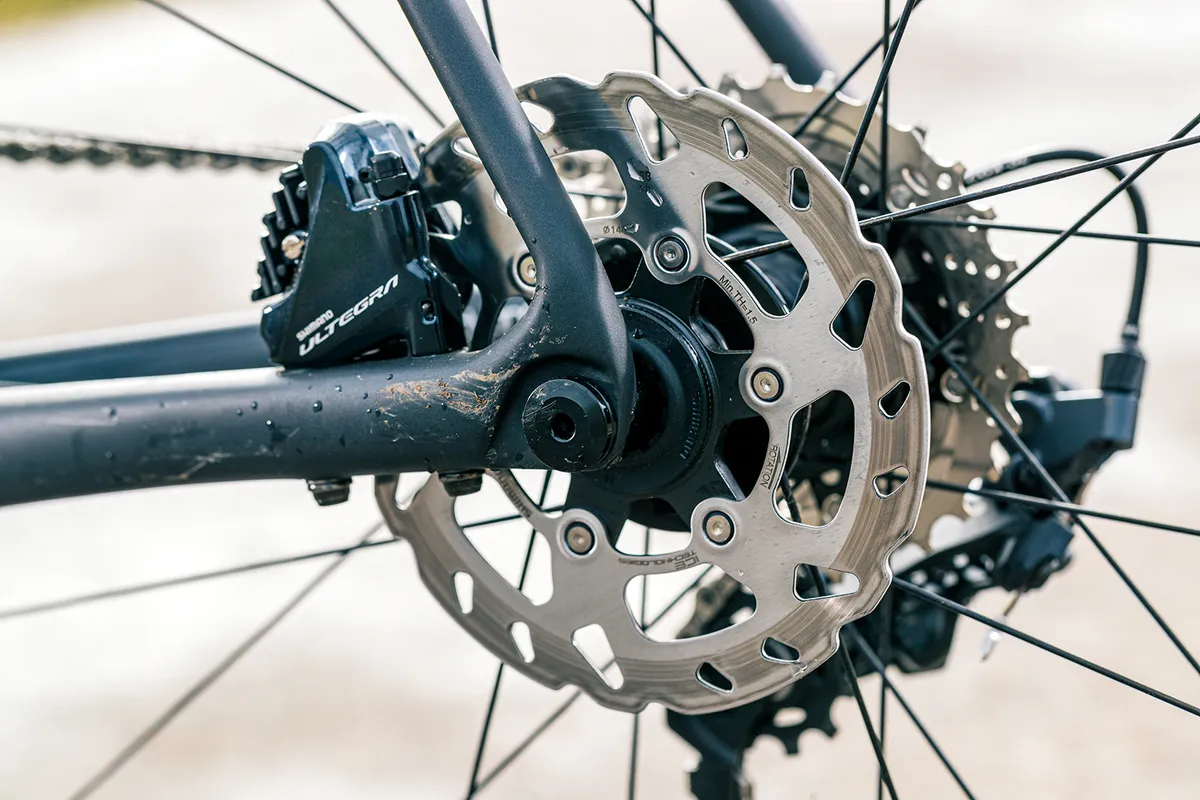Giant has produced a special edition of its Advanced 1 that includes 42mm-deep carbon tubeless-ready disc wheels.
Separately this would add £830, yet the 1+ is only £400 more than the standard Advanced 1. The chainset, however, has stepped down from Ultegra to Shimano’s non-series (but basically 105 level) RS-510 chainset.
Giant’s latest TCR follows the mantra of a bike that’s been a staple of its race-bike range since 1997. It’s the ninth all-new design in its 14-year existence, but it’s still a design based around a compact frame shape with a sloping top tube and steep aggressive angles.
Giant TCR Advanced 1+ Disc frame and kit
Giant hasn’t adopted the current fashion for dropped seatstays, but the sloping frame design already has plenty of vibration-damping comfort.
The new chassis looks similar to the model it replaces. Yet Giant says that by moving the tube shapes over to aerodynamically-optimised ones, it’s shifted the TCR’s aero advantage to the extent that, at a constant 200 watts you’ll save a claimed 34 seconds over 40km.
The TCR was the most expensive bike I had on test but that meant a jump in components. Shimano provides Ultegra throughout in all but the chainset, brake rotors and 105 cassette. Ultegra’s mechanical smooth, slick shifting is as good as anyone needs, and the braking is superb, even with the RT70 rotors.
The finishing kit comes from Giant and the cockpit is quality alloy stuff. The Approach saddle is fairly flat in profile and well padded – I had no issues but it wouldn’t be a first choice. Giant keeps the composite seatpost making the most of the D-shape design, adding compliance and keeping weight low.
The wheels are Giant’s SL 2. This 2021 design takes some of the same principles as the brand’s impressive Cadex pro-level wheelsets. That means a new aerodynamic profile to the 42mm-deep carbon rim, with the 25mm tyre pushing it closer to a 28mm profile.
The rim is fully tubeless-compatible and hookless, meaning the walls of the rim are flat and the tyre relies on pressure to seat properly. The claimed advantages of a hookless design are improved strength and lower weight (because the rim moulding doesn’t have to be so complex).
At 1,545g a pair, the SL 2s are impressively light for a bike of this price; tyre pressure was constant and inflating a doddle.
Giant TCR Advanced 1+ Disc geometry
| | S | M | ML | L | XL |
|---|---|---|---|---|---|
| Seat angle (degrees) | 74 | 73.5 | 73 | 73 | 72.5 |
| Head angle (degrees) | 72.3 | 73 | 73 | 73 | 73 |
| Chainstay (cm) | 40.5 | 40.5 | 40.5 | 40.5 | 40.5 |
| Seat tube (cm) | 44.5 | 47 | 50 | 53 | 56 |
| Top tube (cm) | 53.5 | 55 | 56.5 | 58 | 60 |
| Head tube (cm) | 13 | 14.5 | 16.5 | 18.5 | 20 |
| Fork offset (cm) | 4.5 | 4.5 | 4.5 | 4.5 | 4.5 |
| Trail (cm) | 6.4 | 5.92 | 5.92 | 5.92 | 5.92 |
| Bottom bracket drop (cm) | 6.95 | 6.95 | 6.7 | 6.7 | 6.7 |
| Wheelbase (mm) | 977 | 980 | 991 | 1,006 | 1,020 |
| Standover (cm) | 72.5 | 74.7 | 77.3 | 80 | 81.6 |
| Stack (cm) | 52.8 | 54.5 | 56.2 | 58.1 | 59.6 |
| Reach (cm) | 38.3 | 38.8 | 39.3 | 40.2 | 41.2 |
The geometry hasn’t changed from the old model, which I own and love. Small changes have taken place, though, with the bottom bracket height reduced by 2mm due to the increased tyre clearance (up to 32c from 28c).
The stack height from the bottom bracket remains the same at 581mm (size large) and the 402mm reach produces an aggressive ride position. Add in parallel 73-degree angles for head and seat and it makes for a bike that wants to go quickly.
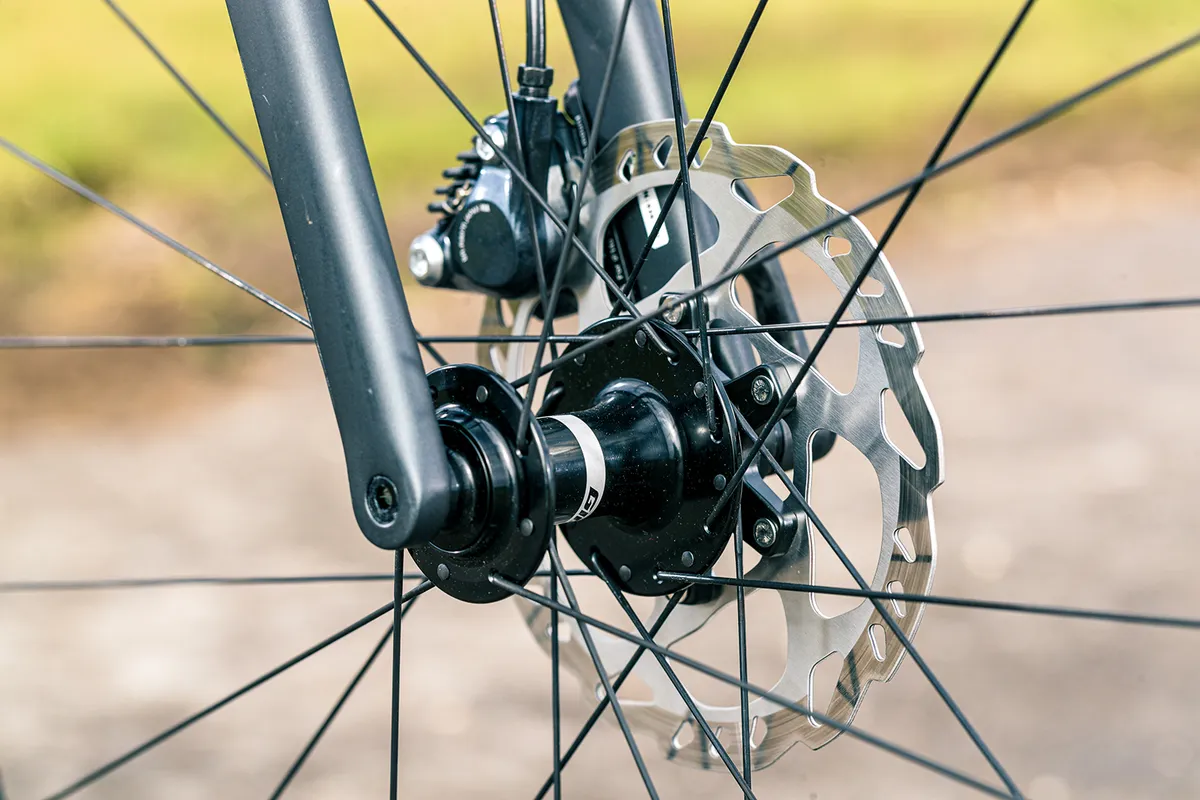
On the road, the TCR shares the same firm but fair character as Basso's Venta Disc 105 and Cannondale's SuperSix EVO 105 (2021). This translates into pedalling efficiency and a bike that wants to jump as you stomp on the pedals.
It’s a top performer when it comes to climbing, partly down to the lower weight overall and light wheels. You’ll want to attack out of the saddle.
On the descents, the TCR feels superbly planted – in pure handling terms this and the SuperSix EVO are a class apart. On road comfort, the TCR can’t match the plush ride of Lapierre's Xelius SL 5.0, and it’s a little behind the SuperSix EVO, but I wouldn’t describe the TCR as hard.
I would say it’s a bike that would benefit from a larger volume tyre on our scarred country roads.
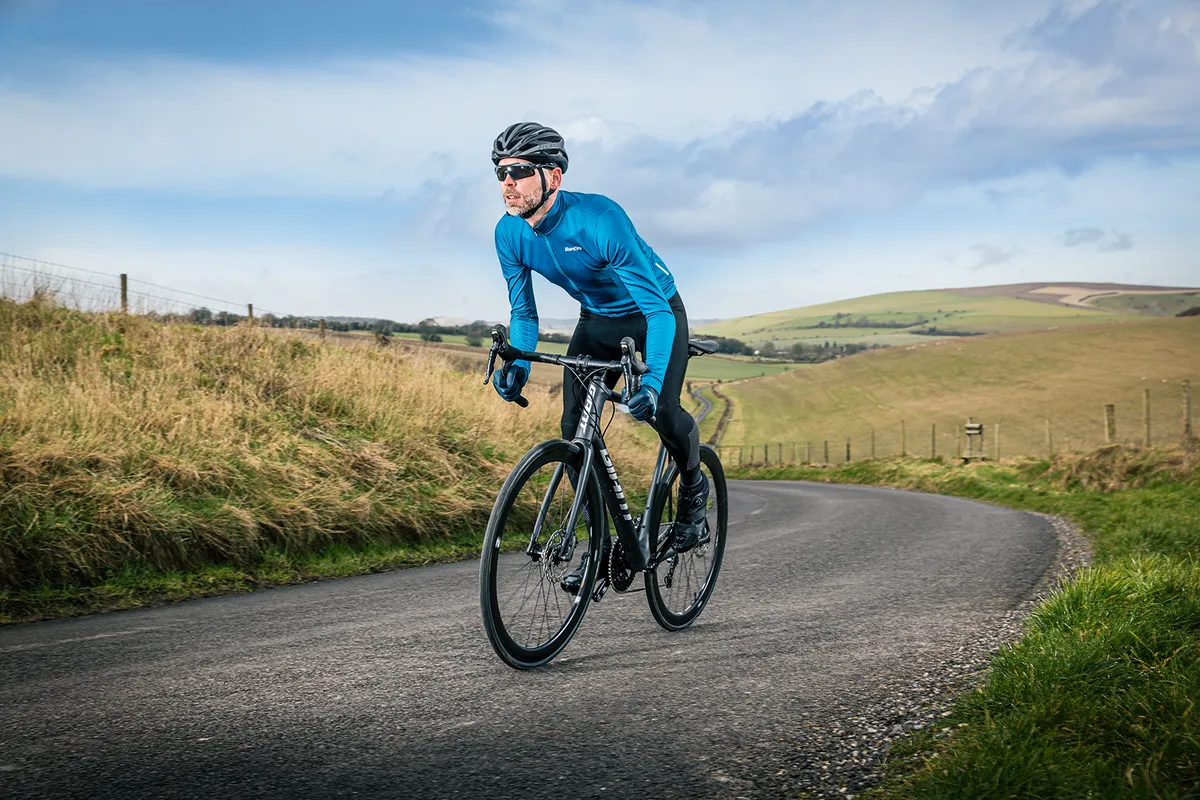
The 1+ is only available through Giant’s website as a click-and-collect product, so you get much the same support as buying from a shop (set-up/fitting, service back-up).
The other plus is that Giant offers zero per cent finance over 36 months. All of which means the TCR is a fantastic buy.
It deals with any road topography you throw at it with ease, its handling is hypnotically good, and it looks simply superb.
How we tested
Spending up to three grand on a bike is a big deal, and there’s a huge range of performance bikes at this most competitive of price points. So we’ve picked four contenders that we think bring style and superbike levels of performance for under £3,000 and are worth your consideration.
All of the bikes were tested head-to-head on our local loops, climbs and descents.
Also on test
- Basso Venta Disc 105
- Lapierre Xelius SL 5.0
- Cannondale Supersix EVO 105 (2021)
Product
| Brand | giant |
| Price | 2299.00 AUD,2999.00 EUR,2999.00 GBP |
| Weight | 8.4800, KILOGRAM (XL) - |
Features
| Fork | Advanced grade composite |
| br_stem | Giant Contact |
| br_chain | KMC X11 |
| br_frame | Advanced grade composite |
| Tyres | Giant Gavia Course 1 tubeless 25mm |
| br_brakes | Shimano Ultegra |
| br_cranks | Shimano RS-510 52/36 |
| br_saddle | Giant Approach |
| br_wheels | Giant SLR-2 42mm carbon wheel system |
| br_headset | FSA Overdrive |
| br_shifter | Shimano Ultegra |
| br_cassette | Shimano 105 11-30 |
| br_seatpost | Giant Variant composite |
| br_handlebar | Giant Contact |
| br_bottomBracket | Shimano Press Fit |
| br_availableSizes | S, M, ML, L, XL |
| br_rearDerailleur | Shimano Ultegra |
